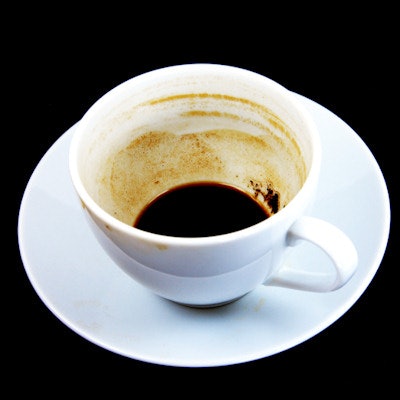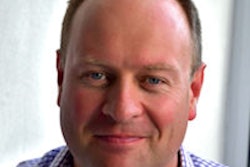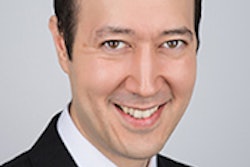
There are those who claim a cluttered desk is a sign of genius. Einstein was famed to have one. But, as all good empirical scientists know, correlation is not the same as causation. A cluttered desk doesn't indicate genius any more than having a shock of white hair or affecting a Germanic accent.
A messy desk is, in fact, just a messy desk. It's messy because you are disorganized. It's messy because you don't prioritize cleanliness. It's messy because you aren't bothered by appearances. Whereas, I would contend, you should be bothered about a messy desk. Otherwise you come across as some form of slothful degenerate. And all the effort you expend on inculcating your professional reputation is utterly undone by the state of your desk.
 Dr. Paul McCoubrie is a consultant radiologist at Southmead Hospital in Bristol, U.K.
Dr. Paul McCoubrie is a consultant radiologist at Southmead Hospital in Bristol, U.K.
Of course, "mess" is a relative term. I am vaguely envious of colleagues whose desks are always spotless and minimalist in content, but I am not obsessive or organized enough to manage that. Whereas others are so ridiculously cluttered the contents spill over onto the floor, enlisted chairs, adjacent desks, and windowsills. If their desk were a cancer, I'd stage it T4 N3 M1.
Similarly, some reporting areas can become horrifically cluttered, usually with bits of paper dominating the debris. To the casual observer, it looks like a dog has attacked a book and no one cleared it up. Except that every scrap has been written on. Numerous spidery scripts indicate that several radiologists are to blame, scribbling on anything that came to hand.
Most PACS stations are flanked by a number of textbooks in varying degrees of disassembly. Typically this is an early version of Teddy Keats' Atlas of Normal Roentgen Variants (aka The Book of Missed Fractures). This usually lies in bits due to a broken spine, which is ironic, if you think about it.
A particular bugbear is dirty cups -- often several generations of them around a shared workspace. Some colleagues have breathtakingly poor hygiene standards, where the weeks-old milky coffee remnant acts as some form of culture medium. Woe betide anyone that accidentally knocks them over and spills the primordial soup within. I looked in one of these cups just recently and I swear something moved in it. I think I witnessed evolution in action.
Apart from the potential health and safety risks, such jumbled chaos distracts from our primary task. It is also dispiriting; such disarray doesn't exactly lift the soul. Put this together and you've got a pretty poor working environment. The sad thing is that such antediluvian conditions are commonplace. I'm astonished by what radiologists will put up with.
Quick productivity gain
Which leads me onto the title of this piece.
I met a chap who was a specialist in designing production lines. We got to talking and I asked him if he had any advice for us radiologists. He said if you want a cheap and quick 5% productivity gain, paint the floors white. I frowned, not really understanding. He explained that to paint the floor of an industrial unit or factory, you have to empty the room of its contents. The byproduct of doing this is clutter is removed and you usually put the contents back where they should be. This act alone is enough to reliably boost productivity.
Just a few months later, I read of another individual who painted the floors white. Sir David Brailsford, former performance director of British Cycling and now general manager of Team Sky, insisted on the floors of bike-maintenance areas be painted white to spot impurities. He is credited with championing the philosophy of "marginal gains" where small incremental improvements in any process add up to a significant overall gain.
Brailsford stated if you broke down everything you could think of that goes into riding a bike, then improved it by 1%, you'd get a significant increase when you put them together. He has been proved right with undeniable success. Team GB topped the gold medals in the last three Olympics, and five of the last six Tour de France winners were his cyclists.
It isn't just cycling. The aviation safety industry is another prime example of this approach. Ditto Formula 1 racing. Many successful businesses have adopted this and its use is spreading in healthcare.
So, when are we going to embrace this in radiology? When are we, figuratively speaking, going to paint our floors white? Given the challenges faced by radiologists, can we afford not to adopt this approach? In fact, you could get started now. Go and wash your dirty cup.
Dr. Paul McCoubrie is a consultant radiologist at Southmead Hospital in Bristol, U.K.
The comments and observations expressed herein do not necessarily reflect the opinions of AuntMinnieEurope.com, nor should they be construed as an endorsement or admonishment of any particular vendor, analyst, industry consultant, or consulting group.



















